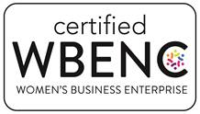We’re big believers that successful onboarding is not just a one-and-done deal; it’s an experience that deserves a long-term mindset.
Thriving and engaged employees are key to driving business outcomes, but they aren’t developed overnight. The first 90 days are the most important–and challenging.
Our secret sauce to engaged and thriving employees?
Create a customer experience for your employees.

Fostering a workplace culture where employees feel seen, satisfied, and engaged is the cornerstone of any successful business. And that starts on week one.
Engage your new hire from the get-go with our behind-the-scenes look at a typical first week for a new employee at Building PPL.
Welcome to Week 1!
Build out their schedule.
During week one, set new hires up with activities that will give them the essential information to start in their role and explain how it contributes to the organization’s overall goals. Create an Asana project or spreadsheet to track the steps you need to take and then spread the tasks across their first week’s schedule.
For Building PPL new hires, a typical day 1 schedule looks a little like this:
[Day, Month]
9:30 AM—10:00 AM: Meet with Krysta and connect on the different areas of the business and break down the plan for the week.
10:00 AM—11:00 AM: Connect with our director of program development to delve into our commitment to our retainer clients. Explore our client-focused approach and how we “wow” our clients.
11:00 AM—12:00 PM: Chat with our director of grant management to uncover valuable tips and tricks for success within our team, industry, and in your role.
12:00 PM—1:00 PM: Lunch with Krysta!
1:30 PM—4:00 PM: Take a breather from meeting with folks. Begin to review our SOP Playbook Hub and set up administrative tasks for a seamless transition into your role.
This is just one day of the one to two-week onboarding schedule we create for each new employee. Additional meetings include shadowing client meetings, watching videos on our technology and systems, and additional opportunities to meet and connect with the team.
If you’re hiring for the same role, you can create a template of the meetings, tech training times, etc., by role and customize it based on the availability when that person starts.
Show them your company mission.
This is the fun part! Create in-person or remote “meet and greets” with people new hires should meet throughout the week. Schedule these meetings directly in their week one schedule/calendar.
This includes their manager/supervisor, C-suite folks, colleagues, and clients (should their role require this). New hires will better understand your company values and mission by hearing directly from the source of the people powering your business.
Schedule regular check-ins with managers.
Don’t ghost your new hire! Embed bi-weekly or monthly check-ins between the new hire and their manager/supervisor in their calendar to ensure your new hire has a designated time to ask questions and better understand how they can succeed in their role.
From a manager’s perspective, these check-ins are a time to understand and learn about your employees’ needs. Ask yourself questions such as the following to encourage your employees’ growth:
- What type of ownership can I give my employees so they can manage their work and be excited about it?
- What kinds of opportunities can I give them to be creative?
- How can I help them not feel stuck in their roles?
- How can I give them a voice and a chance to change processes that aren’t clicking?
Treat your employees like customers.
When new business contracts are signed, we go out of our way to make clients feel pampered and excited about working together, right? What if this approach was extended to your team?
Instead of letting your new employees become old news and shifting the attention they receive to “maintenance mode” after a few weeks, treat your employees like customers.
Think about how quickly you respond to your clients versus your employees. → Can you try to get back to your team just as quickly?
If you’re frustrated with a customer, how would you tackle that conversation versus handling a similar one with an employee? → How can you extend the same grace to your employees?
You would never send a client a half-baked project, so why would you expect a new hire to take off with an onboarding plan that doesn’t do them justice? → How can you set up a successful onboarding process that engages and motivates your new hire to do excellent work from the get-go?
A new employee’s first week should be met with just as much care and commitment to their success as 30, 60, 90 (and so on) days in the office. Keep this onboarding plan in your back pocket and modify it to meet the unique needs of your people and business.
Need help getting started? Grab our eight-step checklist to get new hires up to speed quickly.









